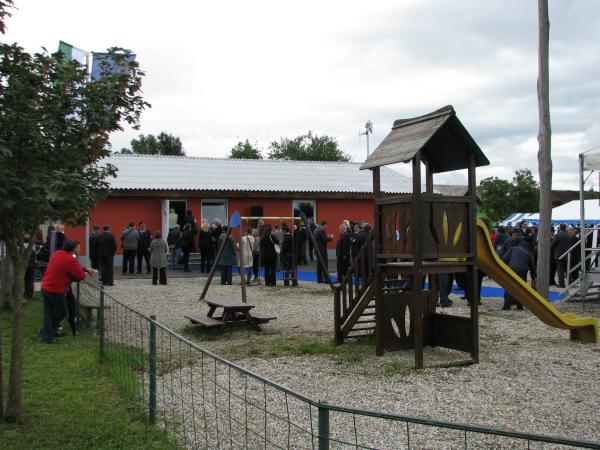
The relations between Slovenia’s Roma community and ethnic Slovenians have not always been exemplary. The Roma in many parts of Slovenia have often faced prejudice and distrust from their non-Roma neighbors. Many have had trouble freeing themselves from a vicious cycle of poverty, and Roma villages often struggle with inadequate infrastructure and are unable to provide their residents with opportunities for success.
However, the village of Pušča in Slovenia’s Prekmurje region stands out as a model community. Pušča is not just one of the oldest and largest Roma settlements in the country; it’s also one of the most successful.
Pušča has had a Roma kindergarten since 1962. Over the decades, the kindergarten has established such a strong reputation that even many non-Roma children are enrolled there. This commitment to quality early education has ensured that children remain in school longer than is the case in other Roma communities and that the overall level of education is higher.
The kindergarten is just one of the ways that the village has promoted a strong sense of community among its residents. Pušča is the home to Europe’s only Roma-run volunteer fire department. Various village events now take place at a modern auditorium that opened its doors several years ago. The village even has its own soccer club with a loyal following.
One of the reasons for Pušča’s success is its longtime commitment to local self-government. A village council was set up in the 1960s and in 2002 Pušča separated from the neighboring village of Černelavci to become a separate - - Roma-run -- village.
Thanks to competent local government, Pušča got paved roads and a sewage system far earlier than most other Roma villages in Slovenia. The tidy homes, decorated with flowers, indicate just how well-integrated in society Pušča’s residents tend to be. Despite their integration, however, they are still immensely proud of their traditions.
In the coming years, the residents of Pušča would like to share that cultural heritage with outsiders. They are hoping to offer Roma-style horseback riding to visitors, who could then also spend the night in traditional Roma tents. Visitors could familiarize themselves with Roma culture through music and dance, purchase crafts made in the village, and even sample Roma specialties in a traditional restaurant. The Slovenian government has already offered financial assistance with the project, which has been dubbed “The Village of Harmony.” The ambitious plans include the construction new buildings featuring traditional Roma architecture.
If the “Village of Harmony” project is successful in turning Pušča into a tourist destination, it would also help the village deal with a persistent problem among its residents: high unemployment. By creating new jobs, the project promises to bring additional prosperity to Pušča, strengthening its status as a role model not just for Slovenia, but also for Europe as a whole.

































































